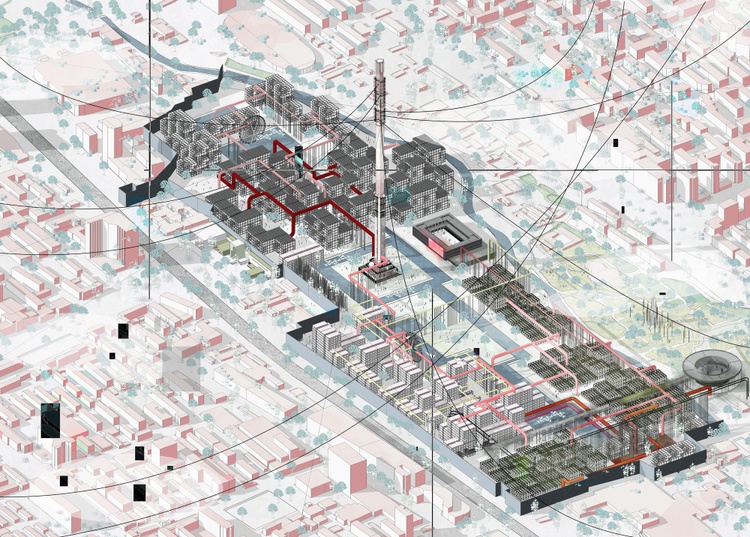The Creative Process Behind Effective Tasks from CDA Architects
The Creative Process Behind Effective Tasks from CDA Architects
Blog Article
Recognizing the Collaborative Refine In Between Designers and Engineers in Modern Building Projects
The collective procedure between engineers and engineers is crucial in modern building and construction projects, as it integrates design intent with engineering usefulness. Exploring these characteristics reveals insights that can considerably affect task outcomes and general sector standards.
The Relevance of Collaboration
The collective harmony in between architects and engineers is crucial for the successful awareness of any kind of construction project. This collaboration combines distinct experience and perspectives, allowing the assimilation of cutting-edge design with useful engineering options. By functioning with each other, architects and engineers can ensure that a project not only satisfies aesthetic and practical demands yet additionally sticks to safety, sustainability, and budgetary constraints.
Collaboration cultivates a common vision, facilitating the alignment of goals and expectations from the outset. This alignment is essential in dealing with prospective challenges and mitigating risks that could occur during the project lifecycle. A collective method allows for the efficient appropriation of sources, enhancing both time and expense.
The significance of collaboration reaches the repetitive procedure of design and construction, where responses from designers can inform architectural choices, causing more feasible and lasting styles. Conversely, architects can motivate engineers to think artistically regarding how to attain structural integrity without endangering creative intent. Ultimately, the joint relationship in between designers and engineers is not simply advantageous; it is basic to the development of premium, functional, and ingenious built atmospheres that meet the demands of society.
Interaction Techniques and Devices
Effective communication methods and tools are vital for promoting partnership in between architects and designers throughout the task lifecycle. Establishing clear channels of communication is necessary to guarantee that all employee are straightened with project purposes, timelines, and duties. Regular meetings, both in-person and virtual, provide opportunities for stakeholders to review progress, address worries, and make educated decisions.
Using task administration software program, such as BIM (Structure Information Modeling) platforms, boosts collaboration by allowing real-time sharing of layout modifications and technical specs. These devices promote transparency, allowing designers and designers to envision adjustments and assess their effect on the general job.

Shared Objectives and Job Vision

Developing shared goals entails open dialogue and a detailed understanding of each self-control's payments. Architects normally concentrate on layout intent, spatial connections, and customer experience, while engineers highlight architectural honesty, systems functionality, and conformity with laws (cda architects). When these point of views are lined up, the outcome is a cohesive project that sticks to both imaginative aspirations and technical expediency
Moreover, a well-defined job vision promotes liability amongst staff member, motivating each participant to take possession of their duty in attaining the desired outcome. Regular check-ins and collective workshops can additionally strengthen this dedication, permitting changes to be made as the task evolves. Ultimately, a shared vision not only enhances teamwork but likewise raises the high quality of the final deliverable, causing successful job completion.
The Role of Technology
Leveraging innovation you could look here has become he said necessary in enhancing collaboration between designers and designers. Building Information Modeling (BIM) stands out as a pivotal modern technology, enabling both designers and engineers to develop in-depth 3D models that encapsulate layout intent and structural stability.
Additionally, cloud-based systems make it possible for seamless partnership, enabling task stakeholders to access and update job data from anywhere. This promotes a culture of transparency and responsibility, as modifications can be tracked and assessed in real-time. In addition, mobile applications more boost interaction, giving on-site groups with prompt accessibility to task requirements and updates.
Arising innovations such as man-made knowledge and artificial intelligence are likewise beginning to contribute in predictive analysis, aiding groups recognize prospective problems before they arise. Ultimately, the duty of modern technology in architecture-engineering cooperation not only improves workflow performances yet likewise enhances innovation, leading to even more successful project end results. By welcoming these technological advancements, engineers and designers can guarantee a more natural and efficient collaborative procedure throughout the building lifecycle.
Study in Effective Partnerships
Countless study highlight the profound impact of reliable partnerships in between designers and designers on job outcomes. One significant example is the cooperation on the High Line in New York City, where landscape engineers, engineers, and urban organizers interacted to transform a deserted rail line right into a vibrant public park. This multidisciplinary technique not only improved the visual high quality yet also made certain structural visite site safety and security and environmental sustainability.
One more excellent case is the layout and construction of the Sydney Music Hall. The collaboration between designer JÃ ¸ rn Utzon and structural designer Ove Arup exhibited innovative analytical. Their cooperation enabled for the legendary shell-like design while dealing with intricate engineering challenges, inevitably resulting in a timeless architectural work of art.
The Burj Khalifa in Dubai better demonstrates the importance of collective initiatives. cda architects. The integration of architecture and engineering expertise enabled the job group to attain extraordinary heights while adhering to security guidelines and visual vision
These instances emphasize the importance of communication, trust, and shared objectives. In today's complicated building atmosphere, such collaborations are crucial to browsing challenges and delivering projects that meet both functional and visionary goals.
Conclusion
In conclusion, the collaboration between architects and designers is essential for the success of modern building and construction projects. Effective interaction strategies, a common task vision, and the combination of sophisticated innovations are vital elements that facilitate this partnership. By cultivating a society of liability and leveraging tools such as Building Information Modeling (BIM), groups can browse job complexities, guaranteeing that aesthetic, useful, and sustainability goals are accomplished. Ultimately, this synergy brings about cutting-edge and successful project end results.
Report this page